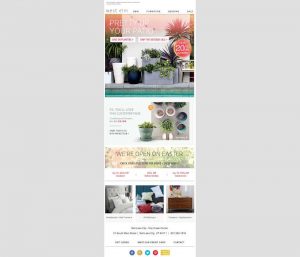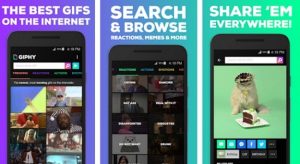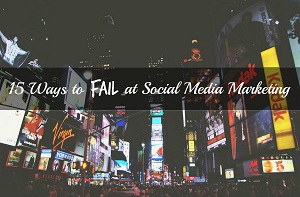Here are three ways brands can identify and market to the right customers while also reducing churn.
The issue of customer retention comes up in nearly every conversation with colleagues in a service business or software company. As companies aspire to transition to an ongoing customer relationship and recurring revenue model (versus traditional transactional relationships with customers), retaining high-value customers is more important than ever.
After all, depending on what industry you’re in, acquiring a new customer can cost your company up to five times more than retaining an existing one. Moreover, increasing customer retention rates by just 5% can increase profits from 25 to 95%. These factors have helped to give rise to major investments in optimizing customer journeys and customer base marketing, as well as establishing new roles such as “customer success managers.” With so much at stake and so much focus on retention, why then, on average does the typical American business have a yearly churn rate of 15%? Why are so many companies losing customers?
Based on my experience, a major driver is that companies are often targeting the wrong customers to begin with. Year after year, we see companies set themselves up for expensive churn issues by trying to serve anyone and everyone who they can convince to choose their product or service, rather than focusing on their most valuable target customers. In my experience, this type of fire, then aim approach is one of the biggest drivers of churn, negatively impacting Customer Lifetime Value (CLV) and ROI for sales and marketing investments.
My churn story
My first lesson around this came earlier in my career when I was vice president and general manager of T-Mobile’s emerging devices business. At the time, T-Mobile had just launched its 4G high-speed mobile data network. Competitors had gotten a head start in this market, so we were eager to capture a share of this quickly growing space.
My team launched the company’s first 4G capable devices including connected tablets and mobile hotspots. After a few stumbles and months of hard work, we found that we had a winner on our hands. Our sales team across the country rallied around the new product line to pitch to customers, and sales started ramping up – with high double-digit growth each month.
While initial sales were strong, we soon discovered we had a serious issue. Our churn rate, or the percentage of customers that left us, was over 10% per month! At that rate, we would need to replace our entire customer base each year just to tread water. Further, our business model, when factoring in our projected customer acquisition and operating costs, required we retain customers for much longer to maintain positive CLV. We had a serious problem.
As we got to work on solving for the gap, we found several issues. First and foremost, we were targeting the wrong customers. Many of our customers, which included small business owners or entrepreneurs, had purchased our 4G mobile hotspots as a home or small office broadband replacement, rather than its intended use as a mobile solution allowing connectivity on the go. We also had the wrong incentives in place. Sales compensation was heavily weighted toward customer acquisition, not retention.
By identifying the right customers and refocusing our efforts, we were able to turn the corner. We revamped our marketing materials, sales and support training, and even tweaked our compensation incentives to ensure that we were positioning the solution to the right customers for the right purpose. Overall, our sales slowed, but churn rate also dramatically decreased. By refocusing our brand strategy, we were more profitable and driving more value for the company – with fewer customers.
The customer retention challenge with T-Mobile is not an uncommon story. In my experience as a consultant, customer churn – driven by a lack of definition or focus on target customers – is a widespread problem. It also explains why on average companies waste more than 25% of their marketing spend on the wrong strategies and channels.
With that overview in mind, here are three key areas companies need to focus on to avoid customer churn:
1. Put your Most Valuable Customers at the center of your brand strategy
Regardless of what industry you work in, serving and over-serving your most valuable customers is the single most important factor in any company’s success. Your MVCs should be the center of gravity for your entire brand strategy – from the products and services you bring to market to your marketing and sales efforts to reach them.
Often when there’s a spike in customer churn, we see companies react and look for a culprit. Comments you may hear include: “The product team isn’t doing enough to improve CX.” “The marketing team isn’t doing enough to retain customers or generate quality leads for sales,” etc. While reacting or looking for a culprit to blame is human nature, this can often lead to short-sighted and siloed efforts by the product, sales and marketing teams.
To be successful in today’s market, everyone across the organization needs to align around a common definition of who the target customer is, what their needs are and what motivates them. You need a single version of the truth around what customers you’re targeting as well as what customers are bad for business. Key questions marketing leaders needs to ask:
- Have we done the upfront segmentation work needed to truly know who our MVCs are?
- Do we have the right tools in place, customer insights and data to allow the product, marketing and sales teams to identify, listen to and effectively target those customers?
- What type of customers should we stay away from?
Leading brands develop a 360-degree view of their MVCs, who they are and how, where and what they buy and why. Identifying your most valuable customers also forces you to make important choices and prioritizations across the business – from your overarching brand strategy to product development, marketing, pricing and customer support.
2. Size your product and experience to the customer
Whether your company is a service provider with a recurring revenue model, or one with a large portfolio of products, you need to know exactly what features, experiences, pricing and messaging are going to resonate with your MVCs or priority segments. Day in and day out, you need to put the voice and experience of your target customers (not all customers) at the center of your product development and CX efforts.
This type of design thinking is absolutely critical for any company to succeed long term. It’s also vital that marketing has a strategic seat at the table with product development team to apply market insights and feedback from target customers to shape future products and CX improvements.
Resist acquiring customers using steep discounts, or getting them in the door by offering a “minimal viable product” with a reduced feature set that will likely not fit their needs. Rather, look to “right-fit” the customer with the product or service option that best meets their needs. That approach is far more likely to build satisfaction and loyalty over time.
3. Embrace experimentation
Customers today expect brands to anticipate their needs in the moment – from their personal shopping preferences to surfacing the right content and experience based on how, where and when they engage. Doing this well requires a cross-company effort to apply both better data and analytics and qualitative insights and voice of the customer feedback to anticipate what your high-value customers want, and in turn surprise and delight them, improving acquisition and retention.
Through experimentation and applying better data and analytics, brands are able to implement strategies to better retain and acquire your MVCs. Key questions leaders need to explore include:
- What are low-cost or low-risk ways to encourage trial of a product or service to ensure the right “fit” before a customer makes a purchase decision?
- How do we design our marketing and sales process, onboarding, and overall user experience to ensure the right customer is matched with the right product or service?
- How can we better tailor our brand positioning, messaging and CX to spark interest and loyalty with the right customers, encouraging word of mouth referrals?
Why this all matters
By investing in the right marketing and sales strategy up-front, identifying the right, high-value customers to target, and optimizing for those specific customer journeys, companies can drive far stronger customer growth, retention and brand equity over time. But all of this only works if you’re focused on the right customers in the first place.
Opinions expressed in this article are those of the guest author and not necessarily Marketing Land. Staff authors are listed here.
Marketing Land – Internet Marketing News, Strategies & Tips
(85)
Report Post








